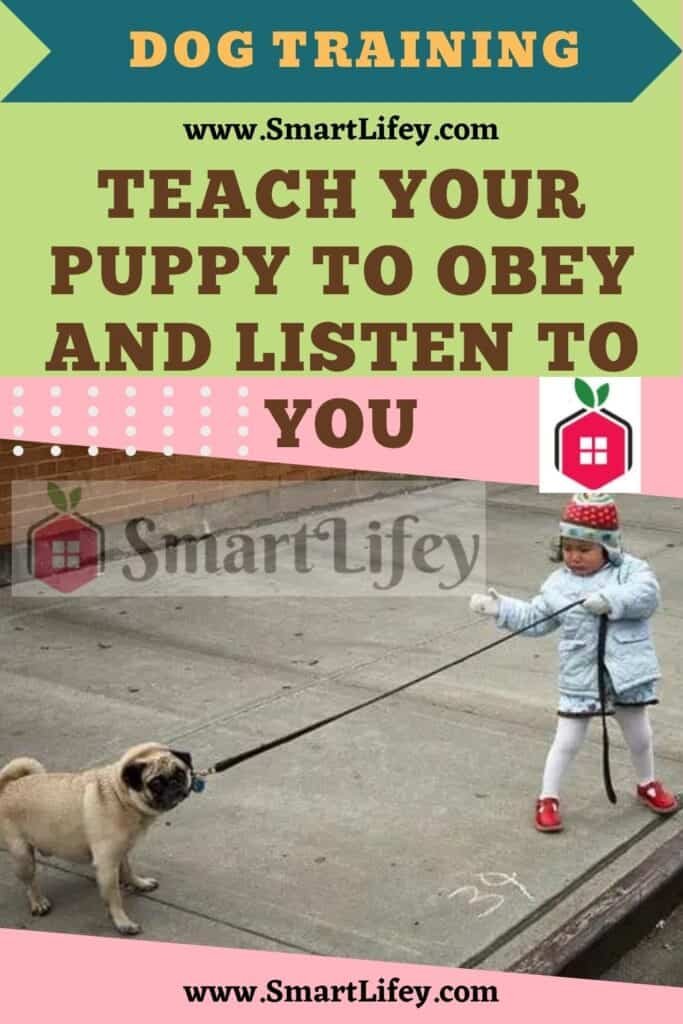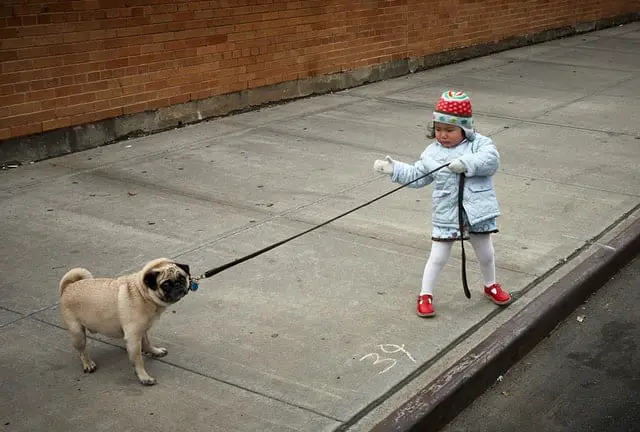
Obedience can be a challenge for the new owner of a young dog. How do you get the puppy’s attention? To make sure it understands our intentions? How to reward them, or react when it makes a mistake? Here are some tips for the first puppy learning.
The learning methods we offer are based on the puppy’s natural abilities. The fun aspect of this learning must always be kept in mind. The game as such will be widely used. We have in fact already specified that it is in no case a question of exercise sessions of a few minutes per day but of continuous learning and only dictated by the needs of the master, the dog and the situation.
Let’s see how to get your pet’s attention, in order to facilitate its education.
Attention in the puppy
The puppy is like a young child: it explores its environment, lively and curious. It is potentially drawn to anything new and exciting, and it may have a hard time staying focused on a complex task !
It is therefore necessary to attract its attention . You will have to teach them to “listen” (and not a distracted ear!) To what you say. It is therefore a question of making himself interesting for the dog, by giving them a reward which will give them the desire and the motivation for the exercises. Basically, the dog tends to be interested in any interaction with you: the simple act of praising them by voice can motivate them enough to learn very quickly.
An important quality in dog training is consistency: it is above all necessary that the exercises and the first orders that the puppy will learn, are those that it will also have as an adult. You can therefore directly teach them to clean, to walk on a leash or to recall, as you would with an adult dog.
The first day at home
So that the puppy becomes aware of its new environment (space and people), it is necessary to make them visit the places and to quickly indicate to them the limits which are imposed on them. This notion of limit is important, because in the old methods of coercive education, we fixed precise limits: prohibition to enter the room, to climb on the sofa, to go through the doors first …
In reality, these limits are arbitrary, and must be adapted according to the dog and the family in which he lives. It is therefore up to us to set the house rules that suit us, then to teach them to the dog, with methods based more on reward and positive reinforcement.
His space
Decide as a family, before the puppy arrives, where you will put it: avoid passageways and living rooms, choose a quiet place. This will be its first refuge . Install a cushion or a cloth with your scent. It will have to come back to this place when you ask them to, it will also be a place to take shelter. Remember in particular to prevent possible children: when the dog goes in his basket, it must be left in peace .
His familiar humans
Avoid showing it to all friends and neighbors on the first day. On the contrary, he must know who the members of his family are. The puppy is sometimes stressed to have left his “original” family and it is painful and tiring for him to have a myriad of visits to the house as soon as he arrives.
So give your dog a few days to settle down. The dog usually adapts quite quickly, so he will be able to meet the neighborhood and your loved ones fairly quickly, but once he has made his mark.
Her name
The easiest way to name a dog, for its owner, is to give it a name. This is absolutely not ridiculous, although some people think it is giving too much importance to the animal.
The choice of the name
The choice of the name is not made lightly. Usually, a letter is used each year, with which the dog’s name must begin. This rule is not obligatory. Masters may well rename a breeding puppy with an “impossible” name by giving it a customary name. The main thing is to choose something short, which “sounds” good, so that the dog picks up this sound well.
It is also important that all family members like this name and that it has a certain meaning for everyone (masters sometimes give the name of a painter or a great sportsman, this is not ridiculous ). Indeed, if your husband or one of the children, not liking the name of the dog, calls it differently, it is not very positive for the continuation of the education. Also avoid diminutives . The dog will not necessarily understand that it is him. Also, remember that your dog must be willing to learn.
When to start your education?
We remind you that education begins from day one at home. The ideal is, of course, to acquire a puppy at the age of three months for a general and personalized education.
If the animal has already received an apprenticeship from another master, the personalization of the education will take longer; but whatever its age, it is still possible .
Not all puppies have the same learning abilities, so don’t be too demanding right off the bat! But don’t forget to stay constant and consistent, and gradually you can increase the difficulty of the exercises to be offered. You can teach a puppy a lot of things before they get their first candle!
The right tools to educate your dog

Teaching your dog to listen to you is an important step in its learning, and nothing should be left to chance: it is an approach to be carried out when it is still a puppy, and in the most playful way possible! To help you, you can equip yourself with the appropriate equipment to train and educate your pet, such as a suitable collar, a training leash, a whistle or even a training set with a remote control.
